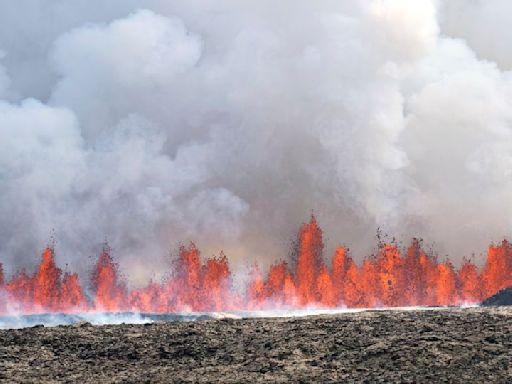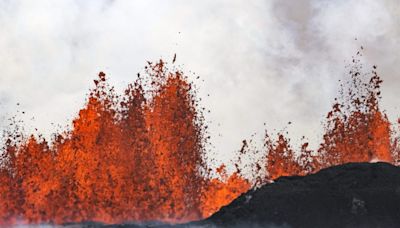Search results
People also ask
What is the biggest earthquake in Iceland?
How many quakes are there in Iceland?
Can you feel an earthquake in Iceland?
How many earthquakes happened in South Iceland in 1896?
Map of notable earthquakes in Iceland since 1900 numbered from most recent. Some notable earthquakes in Iceland have been during earthquake swarms with several earthquakes having very similar magnitude and contributing to human injury, death and/or property damage.
3 days ago · List of largest quakes on record in or near Iceland: Since 1900, Iceland has had 3 quakes of magnitude 7.0 or above, 15 quakes between 6.0 and 7.0, and 167 quakes between 5.0 and 6.0.
Mar 12, 2024 · The largest quake that occurred in or near Iceland during the past 10 years was a magnitude 6.0 earthquake that hit 90 km north of Akureyri, Northeast, Iceland, 4 years ago on Sunday, Jun 21, 2020, at 07:07 pm local time (Atlantic/Reykjavik GMT +0).
- What Is An Earthquake?
- Are There Earthquakes in Iceland?
- How Often Does Iceland Have Earthquakes
- Can You Feel Earthquakes in Iceland
- When Was The Last Earthquake in Iceland
- Is It Safe to Visit Iceland?
- Summary
The Earth is made up of about twenty tectonic plates that fit together like a jigsaw puzzle. These plates continuously shift, grind, and bump against one another. When the friction becomes too much, it is released in seismic shockwaves, which ripple through the ground. This process is constant, and around half-million earthquakes rock the Earth eac...
Yes, Iceland does have earthquakes. Most earthquakes happen on the border where tectonic plates meet, and Iceland just happens to sit right on top of one of these boundaries called the Mid-Atlantic Ridge. This ridge spans the Atlantic Ocean, separating the North American from the Eurasian tectonic plates in the North Atlantic. It wraps around the p...
Earthquakes in Iceland are pretty common like they are in the rest of the world. On average, there are around 500 earthquakes in Iceland each week. Most of these quakes are small and pass without anybody noticing. Bigger earthquakes are much rarer. The largest earthquakes ever recorded in Iceland occurred in 1784 and was believed to be a 7.1, thoug...
Yes, sometimes you can feel an earthquake in Iceland. Although most of the earthquakes here are too small to feel — measuring under 3.0 — there comes a bigger quake on occasion. There are two main types of earthquakes in Iceland, those caused by tension released in the tectonic plates and those caused by the movement of magma. The latter type, move...
As stated, earthquakes are happening all the time in Iceland. So chances are the last earthquake in Iceland just happened while you read this line. Below is a list of recent earthquakes from the Lava Centre in Iceland. In 2020, there was a series of earthquakes, known as an ‘earthquake swarm’, in both North Iceland and on the Reykjanes Peninsula. M...
It is understandable if you are a bit rattled after reading this article. But I can assure you that it is still perfectly safe to visit Iceland. Earthquakes have always been a part of everyday life here in Iceland. Us Icelanders know that fighting natural forces rarely works, so instead, we’ve adjusted our ways to fit Mother Nature’s fickle temper....
Iceland is a mysterious island where sometimes the earth trembles under your feet. Its position on top of the Mid-Atlantic Ridge means that earthquakes are frequent here. Thankfully, most of them are too small to feel. Bigger earthquakes are rare, but they do happen from time to time. When they do, it is important to stay calm and watch out for thi...
The largest earthquakes in Iceland originate in Southwest Iceland, in an area known as the South Iceland Seismic Zone, and in North Iceland, in the Tjornes Fracture Zone. These occur every few decades but don't exceed a 7 in magnitude.
Nov 9, 2023 · The largest earthquake measured 4.8 in magnitude and hit at 00.46, the biggest earthquake since the seismic swarm started on October 25. Its epicenter was just west of Mt. Þorbjörn.


